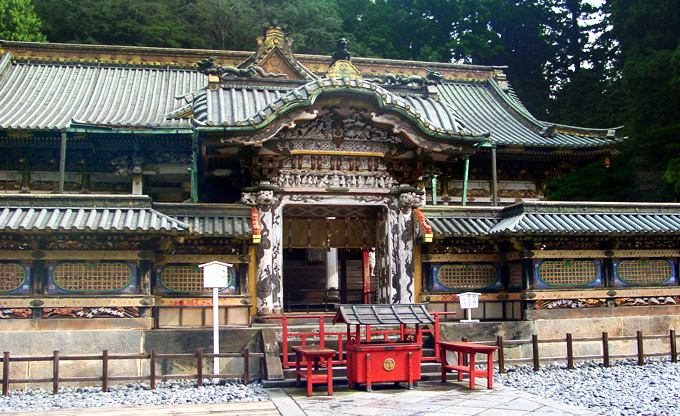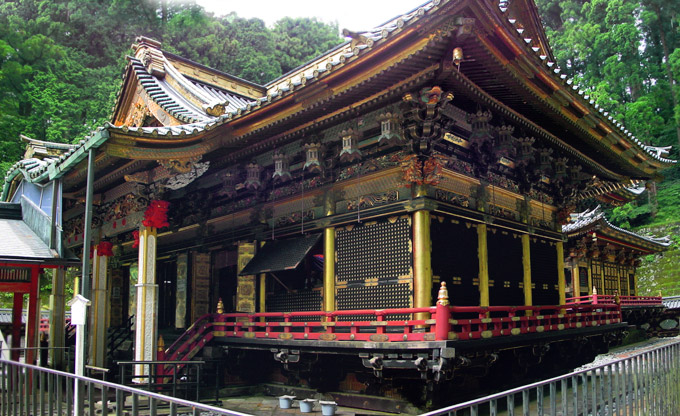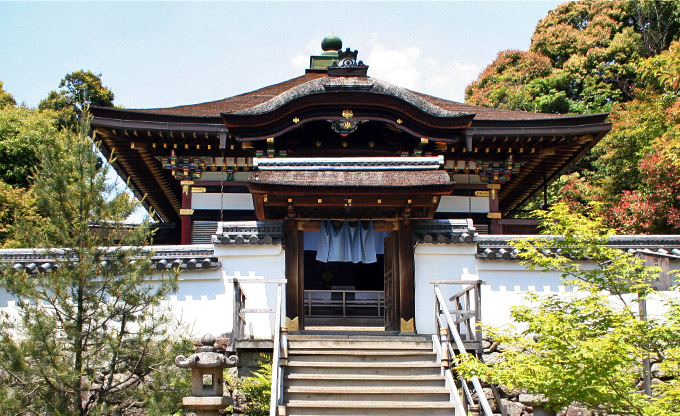|
||
 |
||
A mausoleum in which the spirit of the dead is enshrined. It may be related to the Sanskrit word chita, which means the wood used for the funeral pyre, but in Japan it refers to the tomb itself. Rei ì means spirit. The first reibyou, was constructed at Toyokuni Jinja L_Ð in Kyoto, for Toyotomi Hideyoshi LbGg (1536-98) in 1599, the year after his death. It was destroyed by the Tokugawa ¿ì family but its ruins and screen paintings suggest it was modeled after the shrine called Kitano Tenmanguu kìV{. This shrine was built in 947 in Kyoto, and dedicated to Sugawara Michizane ´¹^ (845-903), a man of splendid and remarkable ability, feared by the powerful Fujiwara ¡´ clan, but forced to retire as a Viceroy to Kyuushuu ãB.
From the first quarter of the 16c, the reibyou became a common burial structure for shogun, feudal lords, noblemen, generals, heroes or other especially revered people. They were usually erected within the precincts of a shrine or temple. Although the plan of the reibyou was never explicitly prescribed, they generally comprise a worship hall *haiden qa and main sanctuary *honden {a connected by a passageway called ishi-no-ma ÎÌÔ. See *gongen-zukuri »¢. All reibyou are lavishly decorated with brilliantly lacquered relief sculpture. Even architectural members are embellished.
Tokugawa Ieyasu ¿ìÆN (1542-1616), inspired by his predecessor, Toyotomi Hideyoshi, and by the enshrinement of the defied Fujiwara no Kamatari ¡´« (614-669) at Danzan Jinja kR_Ð in Nara, aspired to deification after his death and left clear instructions regarding the handling of his remains, his place of entombment and his funeral ceremonies. Thus, from 1616 to 1868, the building of reibyou was fashionable.
Examples: Nikkou Toushouguu, úõÆ{ (1636) in Tochigi prefecture. Vastly redesigned and rebuilt by Tokugawa Iemitsu ¿ìÆõ (1604-51) between 1634-1636. Koudaiji Mitamaya äì® (1605) in Kyoto. Rinnouji Taiyuuin Reibyou Ö¤åQ@ì_ (1653) in Tochigi prefecture. Kongoubuji Mitamaya àõì® in Wakayama prefecture.

Nikkou
Toushouguu úõÆ{ (Tochigi)

Rinnouji
Taiyuuin Ö¤åQ@ (Tochigi)

Koudaiji
Otamaya äì® (Kyoto)
@
(C)2001 Japanese Architecture and Art Net Users System.@No reproduction or republication without written permission.
fÚÌeLXgEÊ^ECXgÈÇASÄÌRec̳f¡»E]ÚðֶܷB

